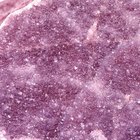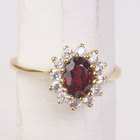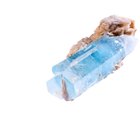
Traditionally, Koreans incorporated five cardinal colors into many aspects of daily life and tradition. The cultural integration of color stems from principles of Eastern religions such as Confucianism and Buddhism. The cardinal colors are associated with the five directions and elements. They often appear in Korean clothing, celebrations, martial arts, architecture, art, food and symbols. A sixth color, green, has also grown to have cultural significance in Korea.
White

White is the most commonly used color in Korea. Koreans were sometimes referred to as "the white clad people." Historically, commoners wore white hanboks, a traditional Korean form of attire. Only royalty and the upper class were permitted to wear colorful hanboks. White is still worn for weddings, new years celebrations and funerals to celebrate the journey to the afterlife. The color white symbolizes purity, innocence, peace and patriotism. Traditionally, white represents the element metal and the direction West.
Black

The color black is associated with mastery and the ending point of a cycle in Korea. Black represents the darkness after mastery has been achieved, the place beyond light. However, because Koreans believe that everything is based on a balance of opposites, darkness is also necessary as an origin for light. Black corresponds with the element of water and the direction North.
Blue

The color blue is associated with the element wood and the direction East. In the Korean flag, blue symbolizes eum or yin, which is cool, feminine energy. Eum energy is associated with the moon and is passive, yielding and receptive. Blue is balanced by red in the Korean flag. While red represents the passionate energy of life, blue represents its opposite, death.
Red

Traditionally red is associated with fire and the southern direction. Red is symbolized by yin energy, which represents masculine energy, the sun and the life force. In the Korean flag, red is balanced by its opposite color, blue. The color red also symbolizes passion and, historically, it was inappropriate for Koreans to wear the color red. However, in modern Korea, red is associated with a passion for sports and it is common to wear red to sporting events to show support.
Yellow

The color yellow symbolizes earth and the center direction. Yellow represents the starting point for developing knowledge and expanding the mind. As one of the five cardinal colors, yellow was traditionally worn, along with the other four colors, as part of a stripe on Korean clothing. Wearing the five-color stripe was historically thought to give children and royalty protection from evil spirits.
Green

Blue and green were traditionally represented by a single word in Hangul, the Korean language. Western influence brought a change in the view that green and blue are variations of a single color and separate words for each color now exist in Hangul. Currently, the color green symbolizes prosperity, a fresh start and auspicious beginnings. Many Korean storefronts are green to draw prosperity and success to the business.
Related Articles

What Do Hot Pink and Black Symbolize?

What Is the Meaning of Colored Bandanas?

What Do the Colors of Mardi Gras Beads ...

What Does a Purple Iris Symbolize?

What Are the Colors for Wedding ...

What Is a Pink Amethyst?

Jamaican & Rastafarian Clothing

The Five Color Diet

Chinese Wedding Anniversary Gifts

Physical Characteristics of the Ruby ...

What Is an African Kufi Hat?

What Is the Meaning of White China Jade ...

What Is Ceylon Sapphire?

List of the Types of Semi-Precious ...

Yin Yang Foods List

Colors of Mink Coats

Who Wears Red Fez Hats?

Ribbon Meanings for a Handfasting ...

What Kinds of Clothes Do They Wear in ...

Patterns to Make a Japanese Kimono
References
Photo Credits
Stockbyte/Stockbyte/Getty Images